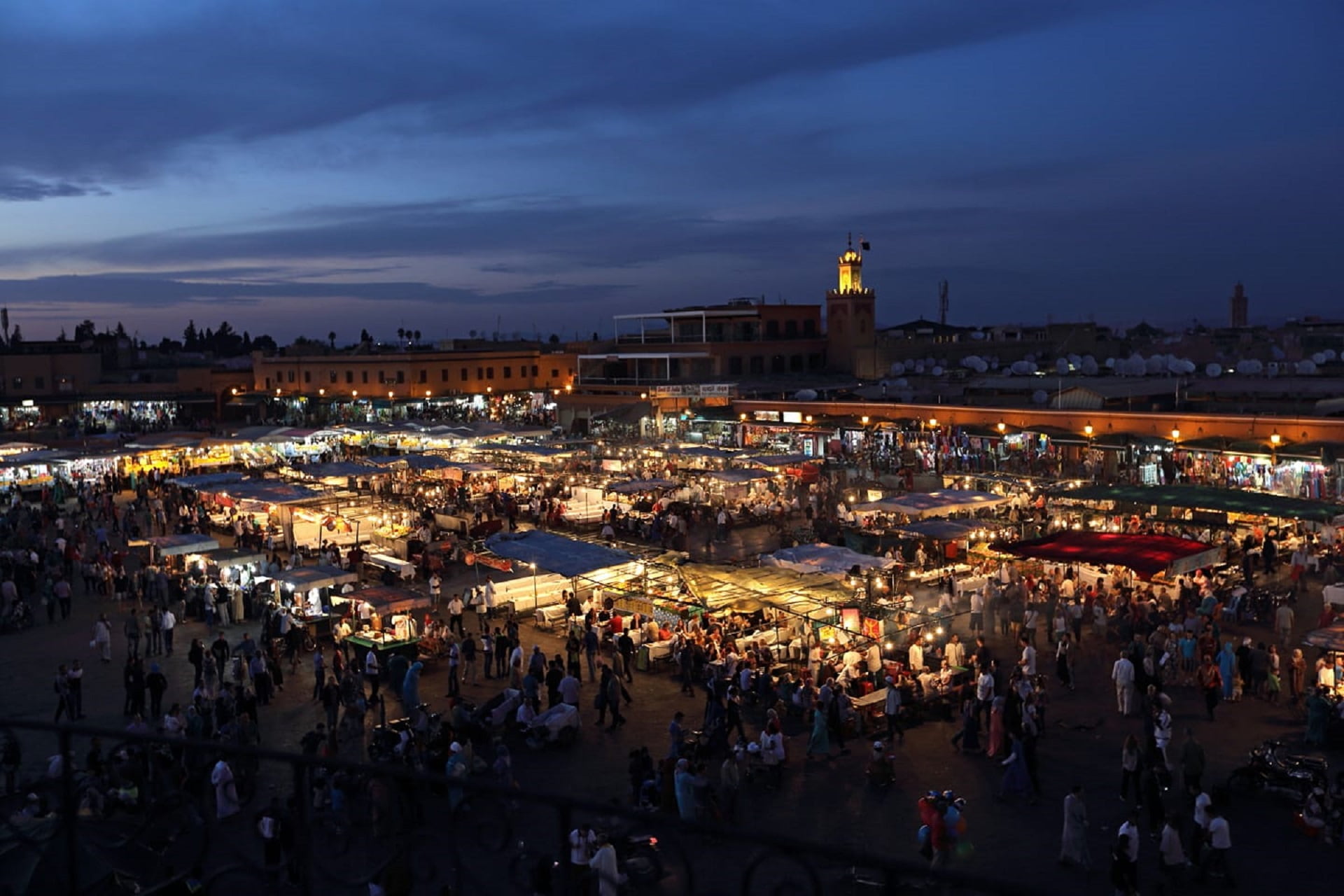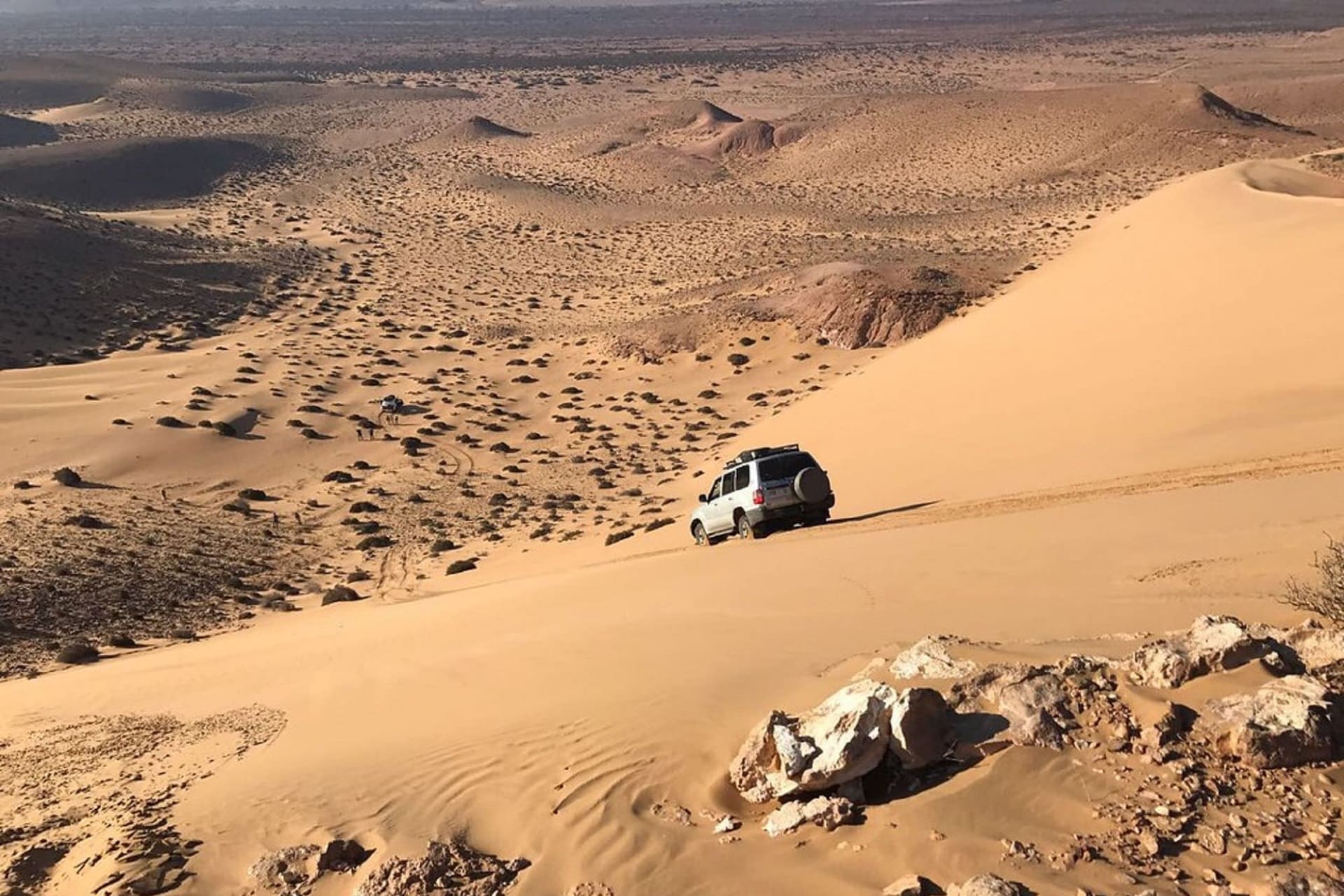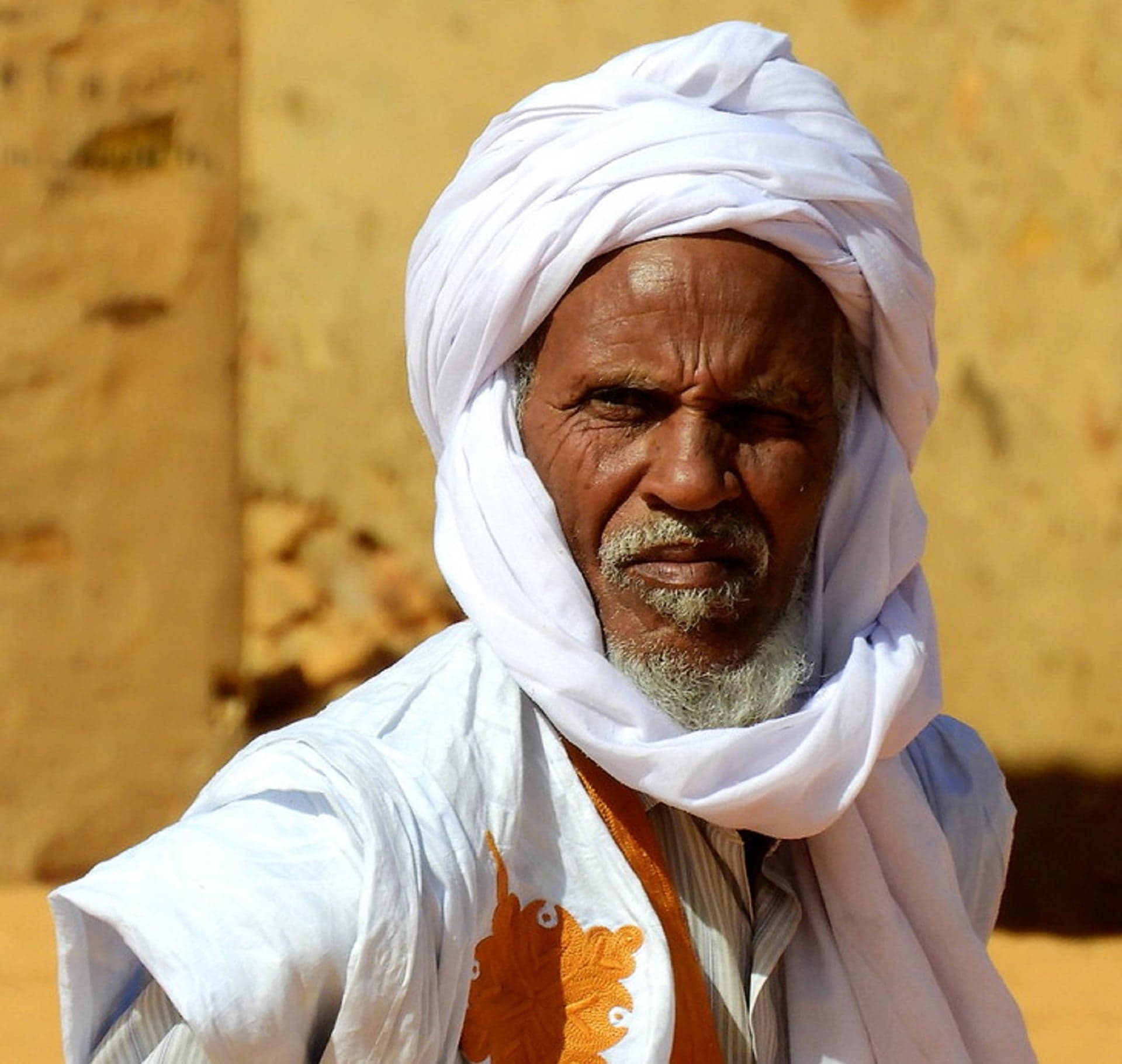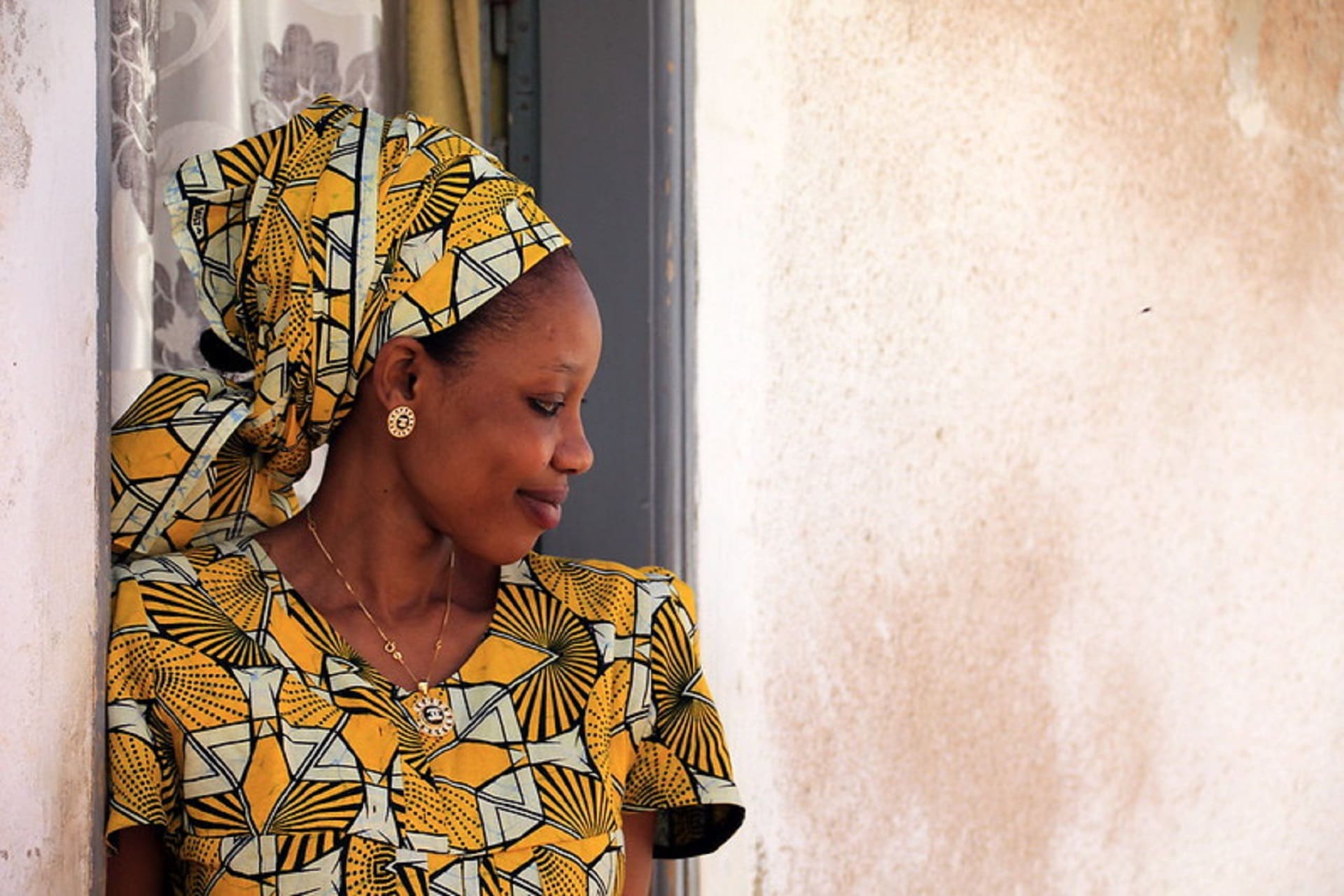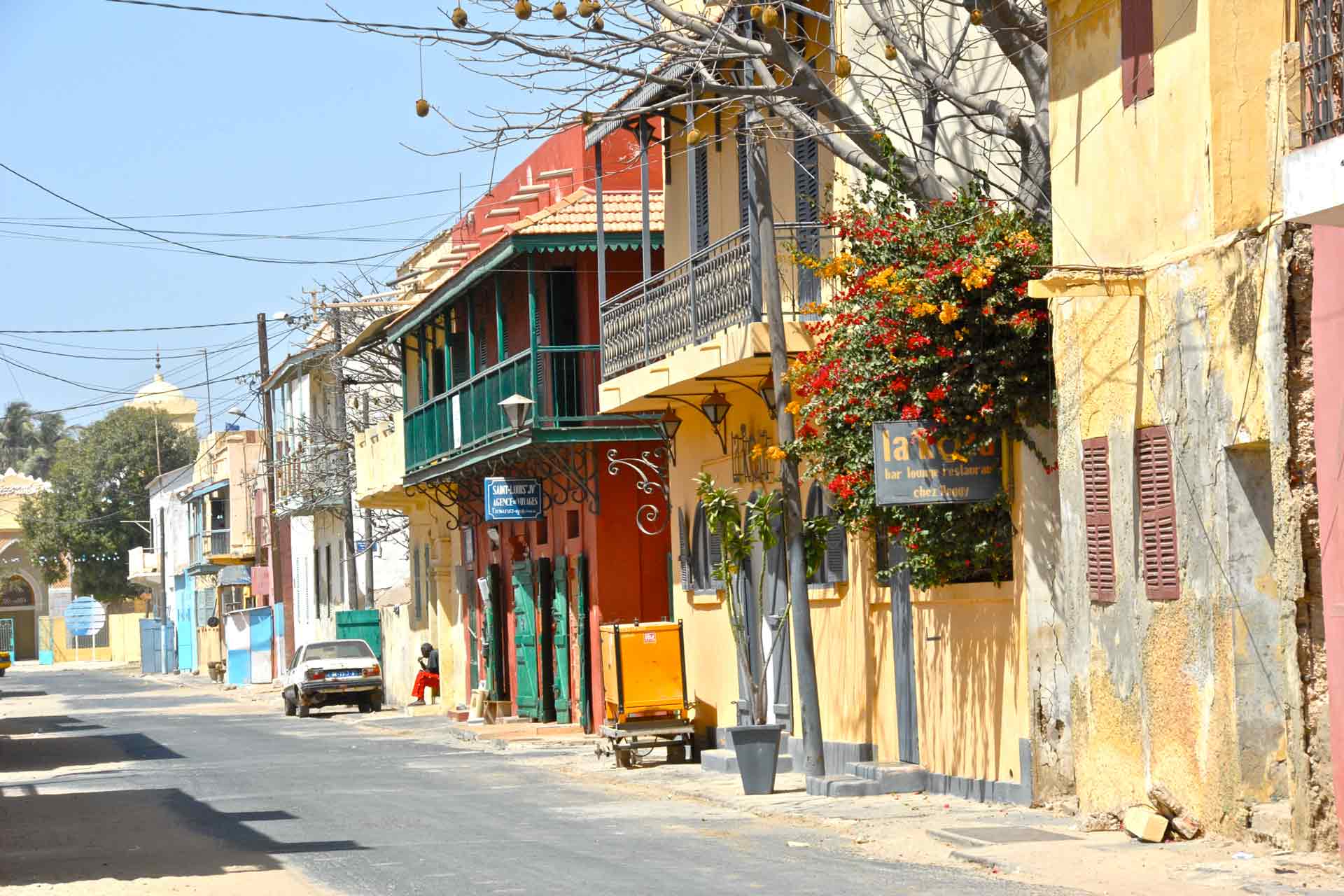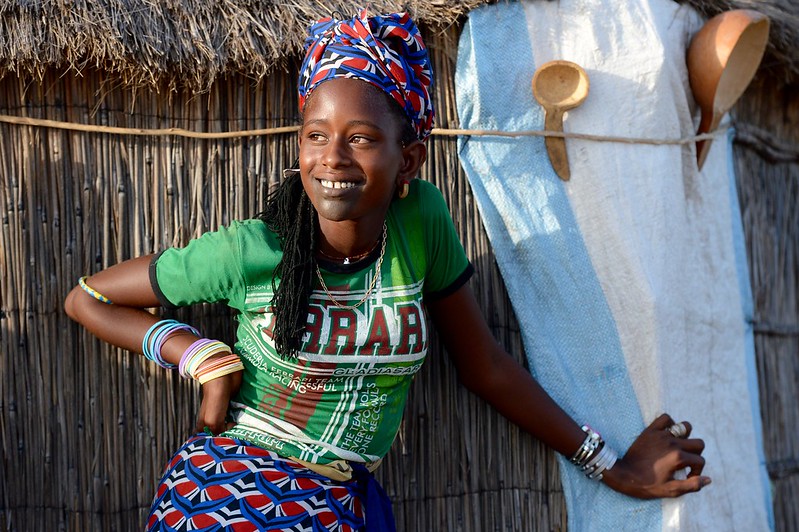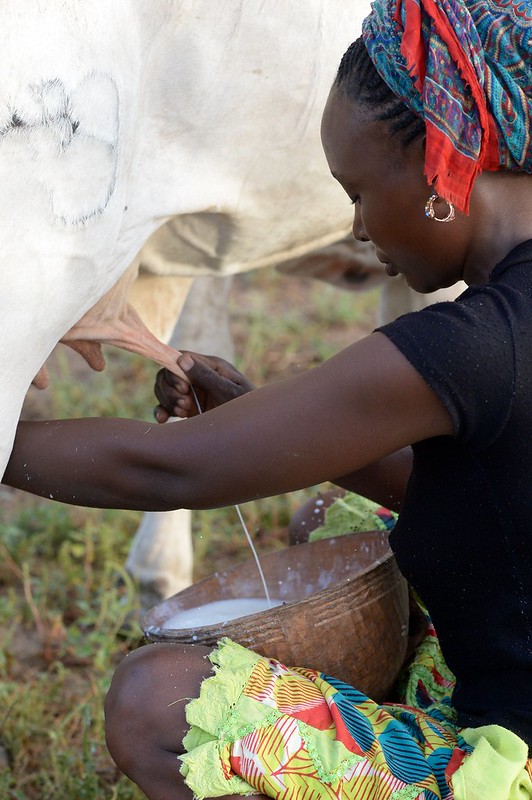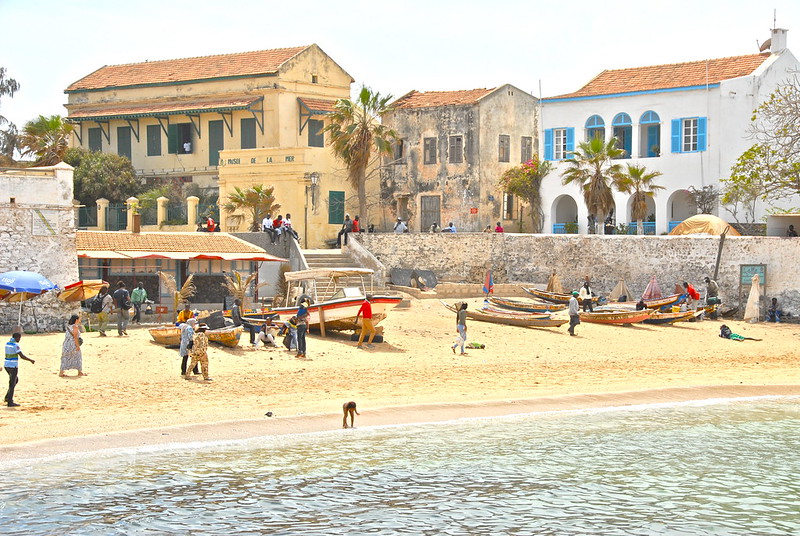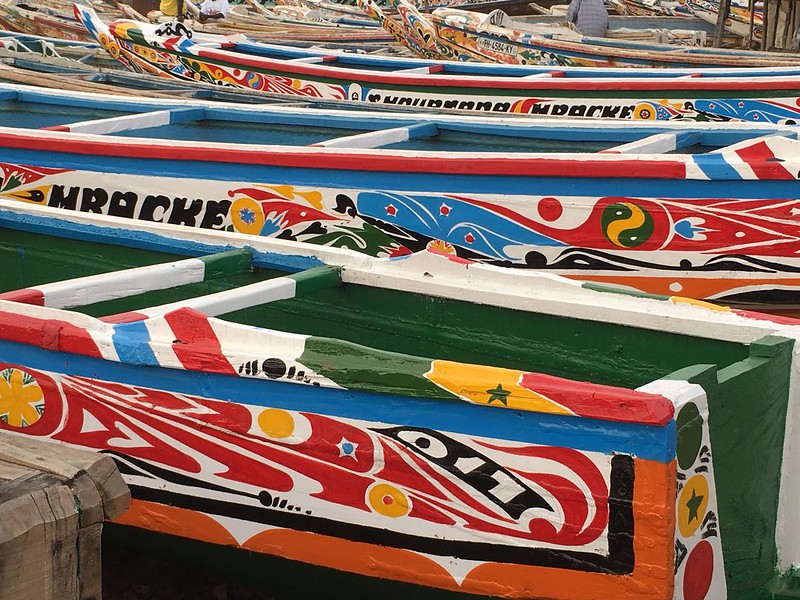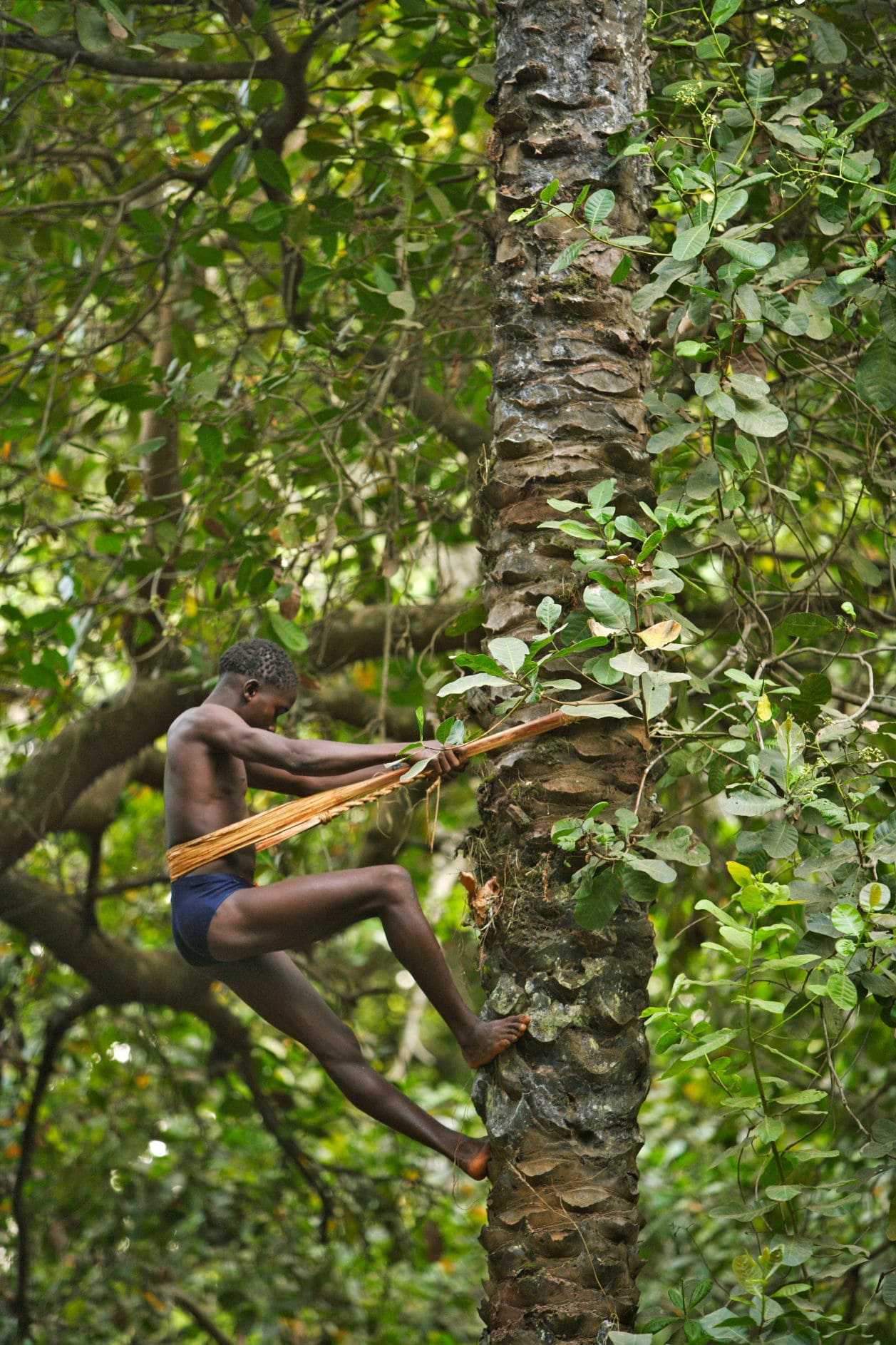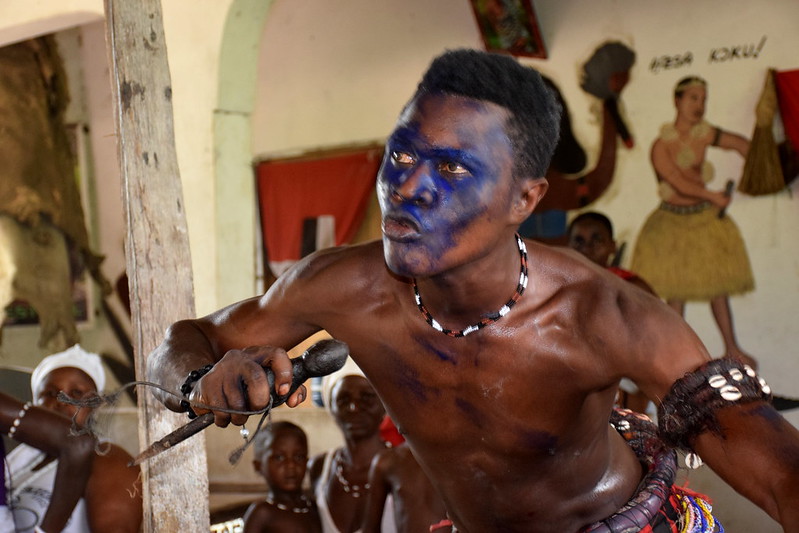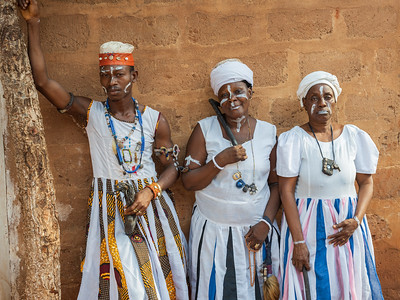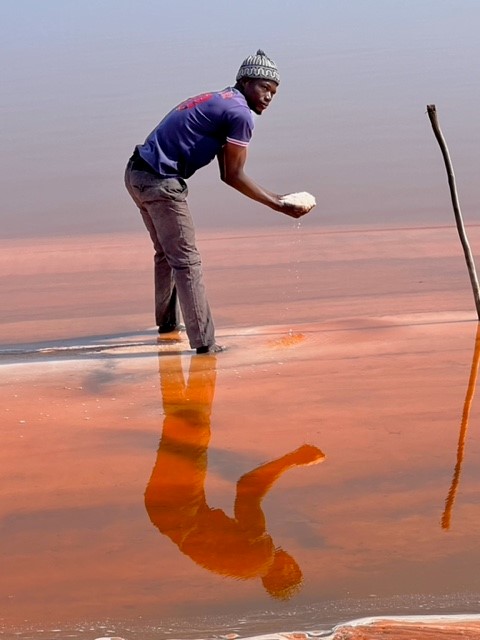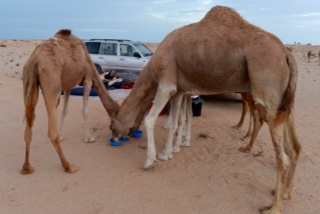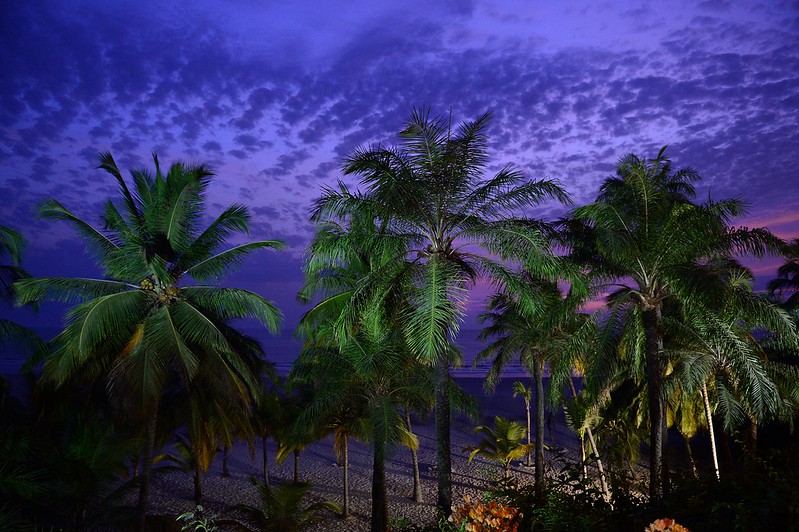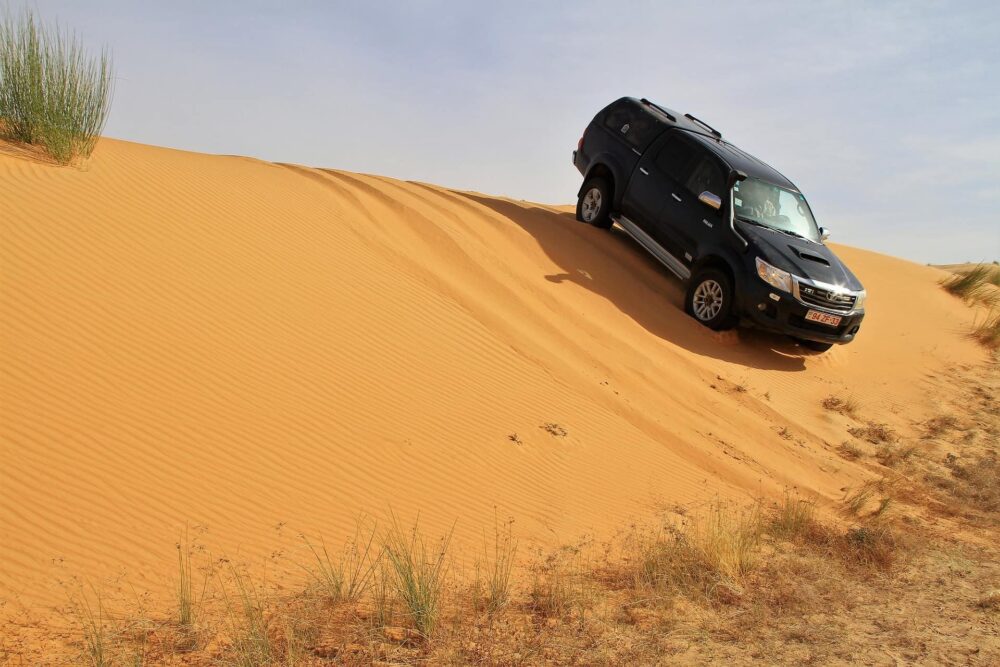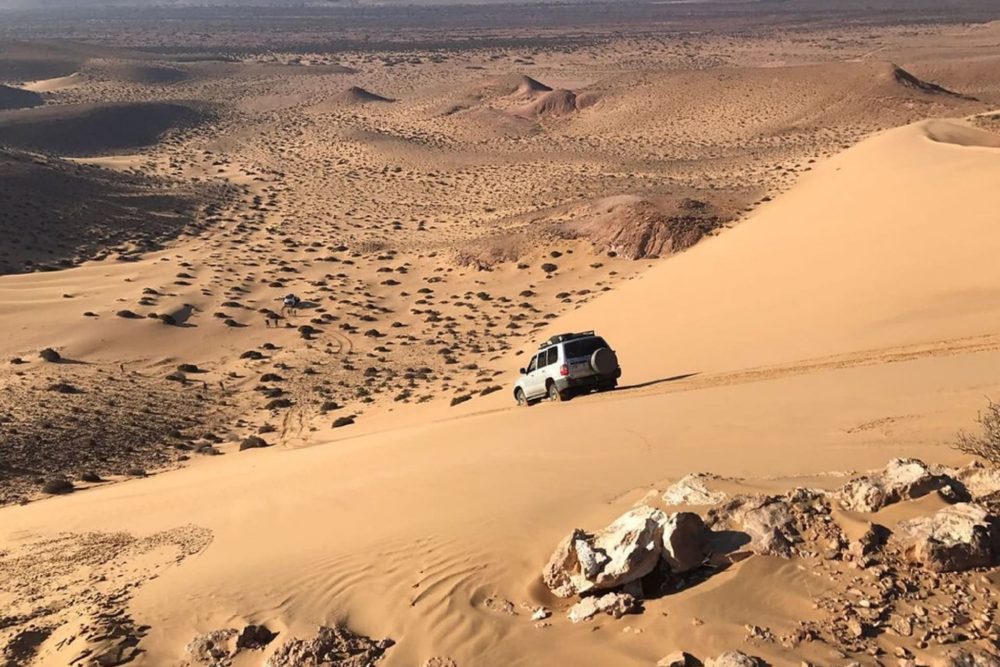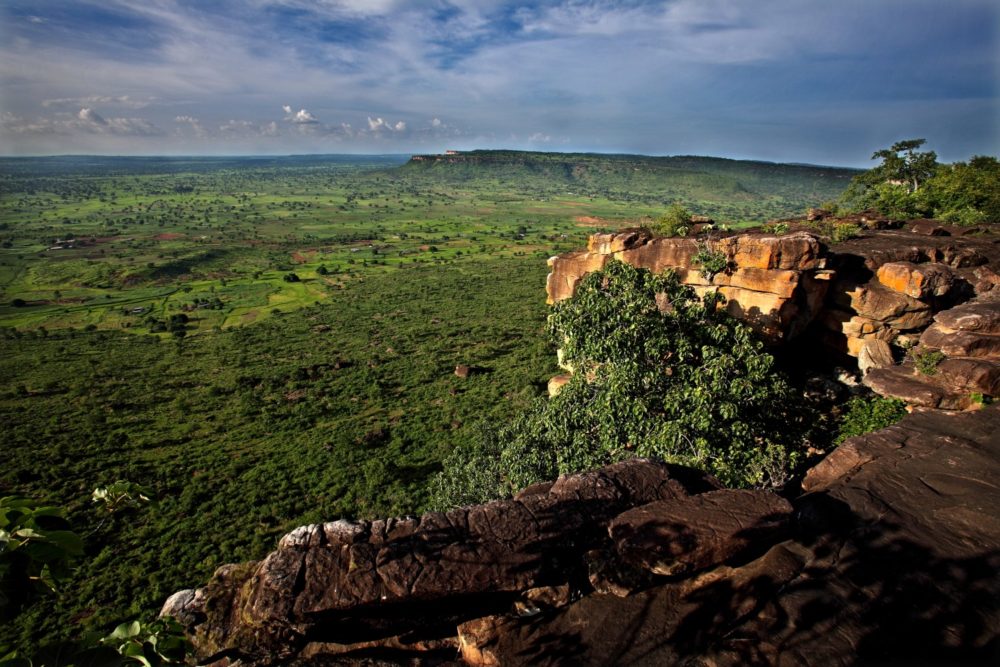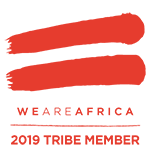Description
MOROCCO AND THE WESTERN SAHARA PROVINCE, MAURITANIA, SENEGAL AND CASAMANCE, THE GAMBIA, GUINEA BISSAU AND THE BIJAGOS ARCHIPELAGO, GUINEA CONAKRY, SIERRA LEONE, LIBERIA, IVORY COAST, GHANA, TOGO AND BENIN.
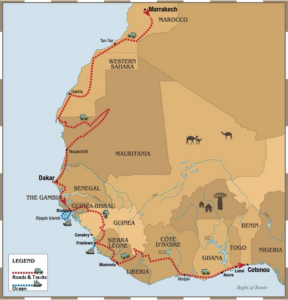
EXPERIENCE. A “Grand Expedition” that crosses the Sahara from north to south and reaches savannahs, forests, coasts and islands in the Gulf of Guinea. We will traverse the main natural, cultural and religious environments of the African continent.
The itinerary starts in Marrakech, mythical caravan terminal, continues to the Western Sahara (now Moroccan Saharan Provinces) and its virgin sands in a region forbidden to travellers for decades, where we are proud to be the pioneers. On the southern part of our Sahara crossing, we discover the remote oasis of Mauritania. In Senegal the landscape will change from desert to savannah. Cap d’Almadine is the western point of the African continent. Driving south the landscape will change again, this time from savannah to forest. The Casamance’s sacred dancing masks will be a sign that with the change of natural environment the cultural and religious environment has also changed, from Islam to traditional animism, from monotheism to polytheism. In Guinea Bissau, we enjoy an exciting three days of boating around the Bijagos Archipelago. We return to the mainland to experience a “tribal concert” performed by the Griots: descendants of musicians and story-tellers lineages dating back to the 12th century. We will go through remote forests and mountains where the arrival of foreigners is a rare event. In the less known corners of Guinea, Sierra Leone and Liberia we will walk on liana bridges to the isolated villages, houses of initiates. On the Fouta Djalon, the largest mountain massif in West Africa, we will be guests of the traditional chiefs sitting in council with notables and elders. Sierra Leone is the first British colony in Africa with the oldest university in this part of the continent. Monrovia is the capital of Liberia, the first independent republic in Africa that has never been a colony or a protectorate, in 1847 it was already ruled by a black president, the Afro-American Roberts from Virginia, part of the Kriol settlers, considered the founders of the nation. Discover Banana Island, a pristine paradise and meet sacred drummers and diamond seeker sites. Along the coast of the Gulf of Guinea, we will travel between shores and islands. In Ghana we discover the Ashanti ethnic group in the time of traditional ceremonies, visit wild beaches and ancient slave trade castles. In Togo and Benin, the focus will be on the African origins of Voodoo: where trances and magic rituals are part of the everyday life.
A once-in-a-lifetime experience: During this multifaced expedition we will also interact with the “contemporary metropolitan Africa”, strolling in the intense city-life of Dakar, Freetown, Abidjan and Accra known for their restaurants and nightlife. In these vibrant West African capitals, you will have the opportunity to feel the exciting mix of urban culture, encounter young artists, discover graffiti and live music, and experience fusion cuisine.
CLIMATE. The departure dates have been chosen to enjoy the best climate. Late autumn (and spring) are the perfect seasons to travel through the Sahara; temperatures are mild and pleasant; nights are cool but not cold and the days are warm but not hot. Winter (and early spring) are the coolest times of the dry season in Sub-Saharan West Africa.
COMFORT is a must to fully enjoy a long travel experience off the beaten path.
Transports: modern, air-conditioned 4×4 vehicles will be the main means of transport on rugged routes, while on main roads, modern, comfortable air-conditioned minibuses will be used.
Overnights: in comfortable hotels, four stars (****) in the capitals. Recent hotels with air-conditioned rooms and private facilities in the rest of the itinerary. The accommodations have been chosen prioritizing comfort, quality of food, friendly service, typical architectural style, and scenic locations. In the remote areas of the Sahara, we will enjoy two nights at our mobile camp with large Bedouin tents, carpets, mattresses and chairs. In case of sand wind, a comfortable restaurant-tent will be set for dinner. A well-organized camp experience under the stars of the desert is a must for the “Sahara experience”.
SAFETY is our main concern. The expedition is based on our long experience of the area and is led by knowledgeable expedition leaders. The itinerary is safe, our local network constantly monitors it thanks to a permanent presence in the field providing updated information.
OR JOIN US FOR ONE OF THE 25 POSSIBLE LEGS OF THE EXPEDITION:
- THE SAHARA: 3 options, from 12 to 19 days itineraries crossing the largest desert on earth, experiencing wild ranges of dunes, oasis and nomadic encampments.
- SAHARA & WEST AFRICA: 6 options, from 14 to 51 days itineraries. From the Sahara crossing to savannahs and to the forests. Experiencing a great variety of landscapes, peoples and tribal cultures from desert nomads, oasis and camel caravans to animistic villages and masks.
- WEST AFRICA: 16 options, from 6 to 34 days itineraries. Savannahs and forests, unknown rituals, tribes and cultures in the most intriguing Sub-Saharan regions.
THE SAHARA
3 options: from 12 days to 19 days itineraries
12 days FROM MARRAKECH TO DAKHLA. PRICE FROM: 2816 €
Morocco & Western Sahara Provinces. From day 1 to day 12 of the itinerary
Start in Marrakech on November 11th, 2024. End in Dakhla on November 22nd, 2024.
19 days FROM MARRAKECH TO NOUAKCHOTT. PRICE FROM: 5985 €
Morocco, Western Sahara Provinces and Mauritania. From day 1 to day 19 of the itinerary.
Start in Marrakech on November 11th, 2024. End in Nouakchott on the evening of November 29th, 2024.
14/15 days FROM TAN-TAN TO NOUAKCHOTT. PRICE FROM: 4485 €
Western Sahara Provinces & Mauritania. From day 6 to day 19 evening of the itinerary
Start in Tan Tan on November 16th, 2024. End in Nouakchott on the evening of November 29th, 2024. (14 days)
SAHARA & WEST AFRICA
6 options: from 13 days to 51 days itineraries
13/14 days FROM DAKHLA TO DAKAR. PRICE FROM: 3995 €
Moroccan Rio de Oro, Mauritania, Senegal. From day 11 to day 23 of the itinerary.
13 days. Start in Dakhla on November 21st, 2024. End in Dakar on December 3rd, 2024.
23/24 days FROM MARRAKECH TO DAKAR. PRICE FROM: 6994 €
Morocco and the Western Sahara Province, Mauritania, Senegal. From day 1 to day 23 of the itinerary
Start in Marrakech on November 11th, 2024. End in Dakar on December 3rd, 2024. (23 days)
31 days FROM MARRAKECH TO BIJAGOS ARCHIPELAGO. PRICE FROM: 8985 €
Morocco and the Western Sahara Province, Mauritania, Senegal, The Gambia, Guinea Bissau and Bijagos Archipelago. From day 1 to day 31 of the itinerary
Start in Marrakech on November 11th, 2024. End in Bissau on December 11th, 2024.
41 days FROM MARRAKECH TO MONROVIA. . PRICE FROM: 13852 €
Morocco and Western Sahara Province, Mauritania, Senegal, The Gambia, Guinea Bissau, Guinea, Sierra Leone, Liberia. From day 1 to day 41 of the itinerary
Start in Marrakech on November 11th, 2024. End in Monrovia on December 21st, 2024.
47 days FROM MARRAKECH TO ABIDJAN. PRICE FROM: 15428 €
Morocco and the Western Sahara Province, Mauritania, Senegal, The Gambia, Guinea Bissau, Guinea, Sierra Leone, Liberia and Ivory Coast. From day 1 to day 47 of the itinerary.
Starts in Marrakech on November 11th, 2024. End in Abidjan on December 27th, 2024.
51 days FROM MARRAKECH TO ACCRA. PRICE FROM: 16206 €
Morocco and the Western Sahara Province, Mauritania, Senegal, The Gambia, Guinea Bissau and Bijagos Archipelago, Guinea, Sierra Leone, Liberia, Ivory Coast, Ghana. From day 1 to day to day 51 of the itinerary
Start in Marrakech on November 11th, 2024. End in Accra on December 31st,.2024.
WEST AFRICA
16 options: from 6 days to 34 days itineraries
34 days DAKAR – COTONOU. PRICE FROM: 11335 €
Senegal, The Gambia, Guinea Bissau, Guinea, Sierra Leone, Liberia, Ivory Coast, Ghana, Togo, Benin. From day 22 to day 55 of the itinerary
Start in Dakar on December 2nd, 2024. End in Cotonou on January 4th, 2025.
26 days FROM DAKAR TO ABIDJAN. PRICE FROM: 9668 €
Senegal, The Gambia, Guinea Bissau, Guinea, Sierra Leone, Liberia, Ivory Coast. Arrival day 22. End day 47 of the itinerary.
Start in Dakar on December 2nd, 2024. End in Abidjan on December 27th, 2024
20 days FROM DAKAR TO MONROVIA. PRICE FROM: 8038 €
Senegal, The Gambia, Guinea Bissau, Guinea, Sierra Leone, Liberia. Arrival day 22. End day 41 of the itinerary.
Start in Dakar on December 2nd, 2024. End in Abidjan on December 27th, 2024.
28 days FROM BISSAU – BIJAGOS ARCHIPELAGO TO COTONOU. PRICE FROM: 9302 €
Guinea Bissau, Guinea, Sierra Leone, Liberia, Ivory Coast, Ghana, Togo, Benin. From day 28 to day 55 of the itinerary.
Start in Bissau on December 8th, 2024. End in Cotonou on January 4th,2025.
25 days FROM BISSAU TO COTONOU. PRICE FROM: 8352 €
Guinea Bissau, Guinea, , Sierra Leone, Liberia, Ivory Coast, Ghana, Togo, Benin. From day 31 to day 55 of the itinerary
Starts in Bissau the 11 December 2024. Ends in Cotonou the 4 January 2025.
20 days FROM FREETOWN TO COTONOU. PRICE FROM: 6861 €
Sierra Leone, Liberia, Ivory Coast, Ghana, Togo, Benin. From day 36 to day 55 of the program
Start in Freetown on December 16th, 2024. End in Cotonou January 4th, 2025.
16 days FROM FREETOWN TO ACCRA. PRICE FROM: 5980 €
Sierra Leone, Liberia, Ivory Coast, Ghana. From day 36 to day 51 of the itinerary
Start in Freetown on December 16th, 2024. End in Accra on December 31st, 2024.
12 days FROM MONROVIA TO ACCRA. PRICE FROM: 4340 €
Liberia Ivory Coast Ghana. From day 40 to day 51 of the itinerary
Start in Monrovia on December 20th, 2024. End in Accra on December 31st, 2024.
20 days BISSAU-BIJAGOS ARCHIPELAGO-ABIDJAN. PRICE FROM: 7600 €
Guinea Bissau and Bijagos Archipelago, Guinea, Sierra Leone, Liberia, Ivory Coast. From day 28 to day 47 (afternoon) of the itinerary.
Start in Bissau on December 8th, 2024. End in Abidjan on December 27th, 2024.
17 days BISSAU – ABIDJAN. PRICE FROM: 6434 €
Ivory Coast, Liberia, Sierra Leone, Guinea and Guinea Bissau. From day 31 to day 47 of the itinerary
Start in Bissau on December 11th, 2024. End in Abidjan on December 27th, 2024.
12 days FREETOWN – ABIDJAN. PRICE FROM: 4170 €
Sierra Leone, Liberia, Ivory Coast. From day 36 to day 47 of the itinerary
Start in Freetown on December 16th, 2024. End in Abidjan on December 27th, 2024.
14 Days FROM BISSAU – BIJAGOS ARCHIPELAGO TO MONROVIA. PRICE FROM: 5807 €
Guinea Bissau and the Bijagos Archipelago, Guinea Conakry, Sierra Leone, Liberia. From day 28 to day 41 of the itinerary
Start in Bissau on December 8th, 2024. End in Monrovia on December 21st, 2024.
11 days BISSAU – MONROVIA (No Bijagos Archipelago). PRICE FROM: 4658 €
Guinea Bissau, Guinea, Sierra Leone, Liberia. From day 31 to day 40 of the itinerary.
Start in Bissau on December 11th, 2024. End in Monrovia on December 21st, 2024.
6 days FROM FREETOWN TO MONROVIA. PRICE FROM: 2690 €
Sierra Leone, Liberia. From day 36 to day 41 of the itinerary
Start in Freetown on December 16th, 2024. End in Monrovia on December 21st, 2021.
11 days FROM ABIDJAN TO COTONOU. PRICE FROM: 3161 €
Ivory Coast, Ghana, Togo, Benin. From the day 45 to day 55
Start in Abidjan on December 25th, 2024. End in Cotonou on January 4th, 2024.
-
Ask for the detailed programs.
-
Any different leg, of your personal choice, can be request.
Day 1: MARRAKECH – Morocco
Individual arrival. A Taxi from the airport to the hotel costs 20 Euro or 25 USD (transfer on request).
Day 2: HIGH ATLAS – Morocco
We will leave the main road to discover the least frequented Berber villages in the High Atlas Range and join the gem diggers in quest of Amethyst, Tourmaline. With their help we will be able to find our own gems. Our itinerary crosses Tizi n ‘Tichka pass at 7460 ft on the southern side of the Atlas. Ait Benhaddou is along the ancient caravan route linking Marrakech with the Sahara. Over the years, many famous films have been filmed in this Ksar, such as Lawrence of Arabia, Sodom and Gomorrah, Oedipus Rex, The Sheltering Sky, The Jewels of the Nile, Jesus of Nazareth, Alexander, Gladiator, and more…
Day 3: OUADI DRAA & ROCK ART – Morocco
Our way will follow the first part of the Ouadi (river) Draa. This important river and its floods have created a long strip of continuous palm grove hiding in its shade vegetable gardens that go south following the river for hundred miles in the desert, a long unique oasis with millions of date palm trees. Visit of an archaeological site with hundreds of graffiti depicting hunters, warriors, horse raiders and wildlife; silent witness of peoples living in these regions thousands of years ago, before the desertification. Lunch in a restaurant at the charming oasis of Zagora, our itinerary will continue along the Draa valley to Mhamid. South east of Mhamid the water of the river will vanish in the desert. Mhamid is the last permanent outpost before the total desert.
Day 4: DUNES, FOSSILES AND ANTELOPES – Morocco
From Mhamid, the Sahara adventure starts; our 4×4 driving off the beaten track will cross a region of high dunes, the Erg Chegaga that we will be able to cross in the middle.
Here with a bit of luck we may encounter some rare and endangered white addax antelopes… The addax is a critically endangered desert antelope that lives in some isolated regions of the Sahara.
After we will reach the dry Salt Lake of Iriki and a site where each of us will be able to find their own fossils.
Day 5: THE OASIS TRAIL – Morocco
On the road again, to cross a region of spectacular scenery: rocky mountains and large oasis.
Walk in the oasis to discover this green miracle surrounded by an arid environment. Lunch in a local restaurant, evening arrival at the best hotel in the region.
Day 6: CARAVAN TERMINALS – Morocco
In the rarely visited region of Assa, we will discover the same ancient Arab-Berber stone architecture that we will see again nearly a thousand miles away, on the southern edge of the Sahara, in the oases of Chinguetti and Ouadane, in Mauritania, which in ancient times were connected to Assa by a caravan route that we will try to retrace in part. The small town of Guelmim, is an ancient caravan terminal. Here we will search for the remains of the ancient Trans-Sahara trade…
From this point onward, the itinerary will partially follow one of the fishiest coasts on earth and the “fling route” of the paleo-artic birds that migrate from Northern Europe and Russia to overwinter in Africa. The migratory birds travelling, like us from north to south, will be a reference for our itinerary as far as to the Bijagos archipelago in Guinea Bissau.
A spectacular ghost military fort still “guards” the former borders between the French protectorate of Morocco and the Spanish Sahara, the scouting of the fort will make us feel like we are on the set of an old French Foreign Legion movie.
Evening arrival at the charming and comfortable Ksar Tafnidilt hotel, built using local material in a beautiful Saharan architecture. The hotel is managed by our friends, Guy and Magali, a French couple. Magali is a desert expert; she won the “Rally des Gazelle,” the most challenging off-road competition reserved to female teams.
Day 7: ESTUARIES AND DESERT – Morocco
Once left Tafnidilt, we cross a steep range of dunes to reach the Dra estuary region, visited only by brave travellers who dare to find their way on the sandy tracks between the cliffs and the Atlantic Ocean. Here, we will discover tiny temporary settlements of fishermen, ghost colonial military posts, dunes and camels in a virgin landscape, and if lucky with the tide, we will drive for miles on a wild beach where the high dunes meet the ocean.
We will leave the coastline, following a riverbed (Ouadi) in a large canyon: the only possible path between the high dunes, cliffs and ocean.
Day 8: DUNES AND LAGOONS – Morocco
From Tan-Tan, the road follows an exciting itinerary through a crag on the edge between the Sahara and the ocean. The Naila salt lagoon, separated from the ocean by rows of dunes, with an estuary on the sea, is the largest Salt Lake in Morocco (100 square Km). A protected area of great natural beauty is an important resting point on the birds’ migratory journey, it can host up to 20,000 individual species such as flamingos, cormorants, gulls, herons and more.
We will board local fishing boats to explore the emerald water enclosed in a wide frame of yellow dunes and brown escarpments in an astonishing beautiful landscape.
Late afternoon arrival at the tiny town of Tarfaya on the Juby Cape, less than 100 km away from the Canary Islands. Tarfaya is a former “Aeropostale” base, pioneered airmail from Europe to Africa and Latin America. Interesting museum and the remains of colonial Spanish architecture. In Tarfaya, Saint Exupéry the famous aviator and writer, author of “Le petit prince” (The little Prince), was familiar.
Days 9 & 10: WESTERN SAHARA: THE FORBIDDEN TRACK – Morocco
In Laayoune we will meet our local guide, a nomad from a Sahrawi tribe who will lead us through a three- day total off-road expedition crossing the Western Sahara from north to south. The former Spanish Sahara colony has been the site of a long war between the Polisario Armed Front and the Moroccan army. Nowadays, it is part of Morocco. Since the second half of the seventies, due to this long “sand war,” this region has been off-limits to travellers. Until today no peace treaty has been signed, but it’s been decades since any fighting has occurred in the strip we cross. We are proud to be the “first” to bring intrepid travellers to the vast, sandy regions of Saguia El Hamra, Tiris Zemmour, ending with the spectacular Rio de Oro sea-look. In this Saharan expedition, we will cross large dunes to discover wells frequented by long lines of camels belonging to the legendary Reguibat nomads. Days 9 and 10 we will camp under the stars in the immensity of the Sahara.
Day 11: FROM THE DESERT TO THE OCEAN – Morocco
Morning continuation of our Trans-Saharan expedition, through a region of dunes, wells and nomadic camps. In the afternoon, a road will bring us to the ocean.
Day 12: RIO DE ORO – Morocco
The astonishing beauty of Dakhla peninsula landscape makes it a unique place. The Rio de Oro is a 25-mile-long sea loch between cliffs and dunes. Pastel colours paint the scenery: the blue ocean, yellow sand, emerald seaweed fields and dark rocks. Experience a unique event: during the high tide the ocean will flood the desert: a white dune and rock hills will become temporary islands.
The small town of Dakhla was founded by Spanish navigators in 1502 as “Villa Cisneros.” Visit to the colourful fishing harbour, lunch in an oyster farm. Driving along the shore to discover where the waves lap the sand dunes. Dinner in a typical restaurant.
Day 13: BORDER: LINES IN THE SANDS – Morocco – Mauritania
Our way run on the spectacular cliff between the desert and the ocean. We follow the only open road going south. A signboard indicates that we are “on” the Tropic of Cancer. At Guerguerat military post we will cross the southern border post of Morocco, the only open route between Maghreb and Black Africa, a sensible site. We will travel a few miles into no-man’s land. The boundary is a theoretical line in the desert that “divides the sand from the sand”, on the other side, the military post of Mauritania. Evening arrival in Nouadhibou.
Days 14 and 15: ADRAR: DUNES AND MOUNTAINS – Mauritania
A day of driving between road and trail will take us to the mining town of Akjoujt. After Akjoujt an absolute “out of any track” long itinerary will find the way through high dunes. To cross long ranges of dunes, we will decrease the tire pressure, GPS, maps and compass will assist our land-navigation in an untouched geological universe. Erg Amatlich is one of the most beautiful dune basins in Mauritania. The Sahara can make a traveller feel like the first person on a planet. We will be able to discover traces of thousand-year-old human presence such as stone tools and shards of potteries. When some rare graze appears, we will find nomadic settlements. These human encounters, after the deep silence of the desert, are intense. We will go into the scenic landscape of the Adrar massif.: valleys, high mountains, yellow sand dunes, peaks of dark and red rock. We will enjoy remote oasis and tiny adobe villages.
After a long and intense day, evening arrival in Chinguetti where we will spend two days visiting the region.
Day 16: CHINGUETTI, THE OASIS – Mauritania
We will spend the day discovering the unique atmosphere of Chinguetti considered the “jewel” of the Mauritanian Oasis. This stone citadel dates to the 13th century and is a cross-point of different trans-Saharan routes linking the Mediterranean coasts to Black Africa. The atmosphere of the old stone town, the architecture, some ancient manuscript collections from the Middle-ages, including Ould Habott, the largest in Mauritania. The oasis with their “green miracles” of palm tree gardens are surrounded by large chains of yellow dunes, the western boundary of the town that “fights” not to be covered by the sand.
The main Mosque and the stone minaret: Chinguetti minaret is believed to be the second oldest still operating in the entire Muslim world.
Return to our cozy guest house.
Day 17: OUADANE, THE REMOTEST – Mauritania
We will drive to Ouadane in an absolute “out of any tracks” itinerary that follows a Ouadi (dry creek), discovering tiny oasis hidden in the high dunes. Experience Ouadane the remotest oasis in Mauritania, an outpost in the emptiness of the desert. Ouadane was founded in 1147, while most of it fell into ruin, some of its stone houses, perched on a rocky hill, are inhabited. Back in time, this town was an important caravan trading point. Trading was so flourishing that, in 1487, Portuguese built a fortified counter in the region.
Return to our comfortable base in Chinguetti.
Day 18: GREEN OASIS – Mauritania
The landscape will never cease to amaze us. Leaving the main track, we will reach a region of spectacular mountains, gorges and canyons. Infinite space dominated by the ochre of the earth and the blue sky. At the horizon the ruins of Fort Saganne, built to set the namesake film: Fort Saganne with Gérard Depardieu e Catherine Deneuve.
The Agrour site, located at the top of the Amogjar pass, hides prehistoric Roc Art.
After a short visit of the Atar market, we join Terjit, one of the lushest oasis of Mauritania. After walking through a dense palm grove protected by a gorge and following a tiny stream, we discover a vast rock shelter where spring water flows. An unexpected atmosphere disconnected from time and from the harshness of the desert.
Day 19: NOUKCHOTT – Mauritania
From the desert to the ocean, from Sahara to black Africa.
As resume of Mauritanian history and culture, visit of the interesting National Museum which displays archaeology, artifacts, costumes and textiles from prehistory to the present days. Unique pictures taken during the excavations of Aoudaghost, the northern trading town and better conserved site of the legendary Ghana Empire. Ghana was the oldest Empire and Kingdom known in Black Africa. Dated from the 6th century, the empire was in the southern east of Mauritania. At that time the caravan transporting gold to North Africa departs from Aoudaghost and passes through Ouadane and Assa, which we had discovered during our Sahara crossing.
Lunch in a restaurant managed by Ivorian Coast women that will introduce us to the tasty cuisine of West Africa.
Hundreds of colorful pirogues lined the beach on Nouakchott fishing harbour will leave us amazed. Our eyes, accustomed to sand and dunes, will be reflected in tumultuous waters, in which wind, waves, brightly painted pirogues and sub-Saharan (mainly Senegalese) fishermen selling the abundant catches to the market. Mauritania processes more than 1,800,000 tons of fish each year.
Day 20: DJOUDJ NATIONAL PARK – Mauritania – Senegal
Early morning departure in direction south to Senegal. The natural border between Mauritania and Senegal is the Senegal River a natural boundary between desert and savannah. We will cross the river on a mobile bridge and move into a unique wet land between Sahara and Sahel.
The Djoudj National Park, declared a World Heritage Site, is a green oasis formed by hundreds of miles of partially flooded lands. This “humid paradise” is the best habitat and nesting site of over a million migratory and sedentary birds.
Totally surrounded by an arid landscape the protected wetland habitat attracts migratory birds, more than 400 species live temporarily in this unique bird sanctuary. We will enjoy a boat excursion to visit an island with an astonishing concentration of pelicans.
Arrival in the evening in Saint Louis.
Day 21: SAINT LOUIS: COLONIAL AND AFRICAN CITADELS – Senegal
In the morning, visit of Saint Louis, the first capital of the French colonies in West Africa AOF (Afrique Occidental Francais), a charming old town, situated on two twin islands: the colonial and the local, the two located between Senegal River and the ocean. The best way to roam the narrow streets of Saint Louis is on board of a calash, like the locals do! Artisan shops, art galleries, libraries with ancient and modern books and an interesting photographic museum are among the highlights of this charming old capital.
Day 22: FROM “THE” FISHERMAN VILLAGE TO LAKE ROSE – Senegal
Morning drive to the south to discover the largest fisherman village in Senegal, more than 4,500 wooden pirogues came to the shore with the catch of the day. We will leave our vehicles for a less intrusive and fun local transport, a donkey chariot, ideal way to approach the fishermen selling their catch to the women, the queens of the market. We will familiarize with the artisans carving the large pirogues, the painters decorating them with bright colours. We will end the visit with an interesting encounter: a “Marabut” (local holy man) will receive us in his large mansion. Specializing in blessings intended to protect pirogues and fishermen, the Marabut will know how to introduce us to ancient techniques of geomancy and divination.
Arrival to Lac Retba, that was known as Lac Rose. It is a shallow saltwater lake surrounded by dunes.
Day 23: DAKAR – Senegal
Senegal capital became an important centre of political, artistic, and intellectual “renouveau” during the independence time and still the liveliest metropolis in French speaking West Africa. Visit of the “Musée des Civilisations Noires” including great collections of Tribal Art, textiles, and contemporary local artists. The “Plateau” district, the Presidential Palace, a typical market, the totally restored Dakar-Bamako railway station – a great example of colonial architecture. Ferry to Gorée Island. The right time to enjoy the atmosphere of Gorée is at sunset, when the massive-tourists have disappeared. Slaves waiting to be shipped to the Americas were crammed onto Gorée Island; fully restored, the island still bears witness to those times. Today, the breezy climate, history and ancient architecture, along with fine restaurants and boutiques, make Gorée an attractive and trendy destination for local and foreign visitors.
Days 24: THE SALT PANS OF KAOLAK – Senegal
We head to Kaolack town, in a region of salt pans. Lunch in a local restaurant. Kaolack, situated on Saloum River is an important port for exporting peanuts and salt from Senegal and neighbouring countries, and a large market.
Day 25: BETWEEN ARCHEOLOGY AND CONTEMPORANEITY – Senegal – Gambia
Early departure heading to the region between the north bank of Gambia River and Senegal, which has hosted one of the largest megalithic civilisations on earth. Sine Ngayene is the richest megalithic site with 1,102 erected stones. We cross the border with The Gambia, a tiny English-speaking country surrounded by Senegal and experience a “very local” ferry crossing of the large Gambia River estuary to reach Banjul, the capital of the country. Visit to the national museum. Optional: evening live music in town.
Day 26: GAMBIAN BIRDS – Gambia – Casamance (Senegal)
Morning brief but intense Bird Watching, leaded by an expert through different natural environments like wetlands, and savannah. The Gambia is a known birding destination. Arrival at Casamance border, the southern region of Senegal. The natural environment will gradually change from savannah to forest.
Late afternoon arrival to Ziguinchor a charming small town with interesting colonial architecture and a large market.
Day 27: CASAMANCE: KINGS AND MASKS – Senegal
The road will pass through a spectacular landscape of lagoons, mangroves and small islands created by the Casamance River estuary. In a remote village we will be received by the Monarch of one of the oldest Diola (Jula) Kingdoms. In ancient African traditions, the king is also the High Priest who concentrates political and mystical powers in his person. After the traditional offering of libations at the edge of the sacred forest, His Majesty will be happy to answer our questions about the history of his people, the rules of a traditional chief, and the complicated taboos and mystical meanings of being king in Diola culture.
In the afternoon we will join the ritual dances of the sacred masks of the Diola people. The masks belong to a secret society and the identity of the dancers is not revealed; the mask is said to be animated by spirits. Drums, dances and a colorful crowd will enliven the small village under the shade of large kapok trees.
Return to our base in Ziguinchor.
Day 28: BETWEEN WATER AND EARTH – Senegal – Guinea Bissau
After crossing the border with Guinea Bissau (former Portuguese Guinea), the road will bring us south to a unique eco-system where Bolon (sea arms) penetrate the land for more than a hundred miles creating a large temporary flooding area. The borders between salt water, land and fresh water are uncertain and changes with the tides. 23% of Guinea Bissau territory is under the water during the high tide end emerges during the low tide…
Arrival in Bissau.
Day 29: BIJAGOS SACRED ARCHIPELAGO: THE GHOST CAPITAL – Guinea Bissau
Experience a three-day spectacular navigation on a speedboat to discover the Bijagos Archipelago, its fascinating nature and isolated tribes. The Archipelago, composed by 88 islands and islets, is located at an average of 40 miles from the coastline. Bijagos is a “geographical jewel” for natural and cultural richness.
Bolama was the former capital of Portuguese Guinea from 1871 to 1941, when it was moved to Bissau. When the Portuguese left, native people came to squat this town. The town is now falling apart, partly invaded by tropical vegetation. Bolama, which has been built according to the model of a «Castrum Romanum» (roman citadel), is now a mix of straight large avenues, sunny and lethargic empty squares, dry fountains, bush-like gardens and falling apart Neo-Palladian administrative buildings. In the shade of the columns of the former governor palace, goats graze peacefully; although inhabited, this town enjoys a fairy-tale atmosphere of a ghost town.
Day 30: VACA BRUTO DANCING CEREMONY – Guinea Bissau
Short navigation to discover Bubaque island, the “capital” of Bijagos Archipelago and its market. Afternoon: due to the remoteness and the deep rootedness of the locals to their traditions, the Bijagos people have been little influenced by the external world. Life in the villages is characterized by initiation rites and secret ceremonies. In some villages, the young men must go through a seven-year initiation rite living in a “convent” with no contact with women. In the Bijagos Archipelago life is still ruled by the “cycle of seasons”. During the long dry season, the major ceremonies take place.
Vaca Bruto (wild bull) is the most spectacular mask of the islands: the dancers convey a realistic presence by bowing and facing the ground. The mask’s eyes made out of frosted glass, real horns, leather ears and a rope through the nostril provide the mask with a real aspect of an untamed animal which represents a man in full possession of his physical strength but still with an immature behaviour, as he has not yet undergone the final initiations. All the villagers attend this fascinating ceremony.
Day 31: ISLANDER LIFE – Guinea Bissau
Morning relax at Ponta Anchaca wild beaches and swimming pool, or walking excursion in the island.
Afternoon navigation to Bissau.
On request (not included) Early morning departure for an excursion to Orango Island in search of a residual fauna of Hippos that has acclimatised with the life on islands. Mainly living is fresh-water swamps, sometimes they swim in the ocean. Local guide will lead the visitors, the encounter with the hippos is not always granted. Arrive in Bissau a vehicle will be waiting for us for a brief city tour. Bissau is a tiny but intriguing capital, interesting old Portuguese architecture and a huge fort, a reminder of the slave trade era.
Day 32: GRIOT: THE AFRICAN TROBADORS – Guinea Bissau
Early morning departure. After lunch, we leave the main road for a small village in the Malinké region.
The Malinké are the descendants of the ancient Mali Empire and are widespread in the current territories of Mali, Guinea Conakry, Ivory Coast, Senegal, and Guinea Bissau. Griots are a group of musician-narrators dating back to the 13th century Mali Empire. The village we visit is known for griot families who have been passing on these traditions for generations since the days of the Empire. Well-known also for their skills in producing musical instruments, they will perform a concert. Arrival at Gabu.
Day 33: A REMOTE CORE OF AFRICA – Guinea Bissau – Guinea Conakry
Early departure for a long day of drive. At a remote border we will cross to Guinea (Guinea Conakry, former French Guinea), experiencing a region with wild empty spaces, spectacular mountains covered with a wooded savannah, tropical dry forests and isolated Fulla (Peul) settlements on the Fouta Djalon massif.
Considered the most spectacular area of Guinea, thanks to the mountains, highlands, savannah and deep valleys, the Fouta Djalon is the “water reservoir” of West Africa. As a matter of fact, 3 rivers that give name to 4 nations: Niger, Nigeria, Senegal and The Gambia, have their offspring in Guinea.
This territory is inhabited by the Fulla (also called Peul), famous for their beauty and their skills as the main stockbreeders of Zebu cows in West Africa. We will visit isolated villages, with large clay houses decorated with bas relief, high conical roofs with several layers of straw. Evening arrival to Labe.
Day 34: FOUTA DJALON – Guinea Conakry
Full day dedicated discovering the Fouta Djalon. In the morning we will visit Labe market, the busiest market in the region. Leaving Labe, we will discover a fantastic natural environment where mountains meet savannah and deep valley with forest. The highest waterfalls in West Africa are framed by the forest, in a pristine landscape.
After having been introduced by our connections to the elders, presenting traditional gifts as cola nuts, we will have the privilege to be received by chiefs and dignitaries sitting in council. In a very large clay round hut with a decorated grass roof, dressed in traditional costumes, the descendant of one of the oldest Fulla Kingdom will tell us the history of their people and accept to answer our questions about the origins of their tribe and the traditional rules still practiced.
The “casa a palabra” (the house of word) with fine adobe bas-relief is in a pure Fulla (Peul) architectonical style. Here the chiefs used to meet with the colonial administration.
Visit to the villa built by the colonial governor and later used by the first president of independent Guinea. The leader of the independence was Sekou Touré, one of the most radical anti-colonialist African politician’s; he refused any cooperation with the French and created strong ties with the Soviet Union and a personal friendship with Ceausescu. Some villas used by the ministers and by the guests of Sekou Touré are reminiscences of that time.
Arrival in Dalaba at 3,900 Ft. (1 200 m.) altitude.
Day 35: AFRICAN BAS-RELIEF – Guinea Conakry
We will leave Dalaba following the southern slope of the massif to reach Mamou, Kindia and Forecariah in the evening.
Days 36 and 37: FREETOWN PENINSULA, A LONG HISTORY: Guinea – Sierra Leone
The road joins the border of Sierra Leone, approximatively late afternoon arrival in Freetown, the capital of the country.
Freetown origins: in 1786 the first 380 freed African slaves arrived in Sierra Leone from America where they have fought in the independence war on the side of the British. After having lost the war, the British sent them to Sierra Leone and created the first freed slave settlements. Few months after their arrival, the newcomers were starving, got new and unknown diseases and fought with the locals, who could hardly stand them. A few years after, during the Napoleonic war, Freetown was displaying the British flag and had been attacked by seven vessels of the French navy and destroyed. Few survivors escaped on the pirogues sent by… the slave’s traders. From 1807, due to the abolition of the slave trade by the British Empire, the ships of the slave’s traders caught by the British Navy freed the slaves in Sierra Leone. In 1808 Freetown became the capital of the first British colony in tropical Africa. At that time the Krio peoples, or ex slaves, were more than 50,000, creating an elite who put pressure on the administration for better education. In 1845 “Fourah Bay” the first University in West Africa was built. During Colonial time Freetown was known as the “Athens of West Africa”.
Afternoon drive along the coast at the slopes of the Freetown peninsula mountains, only the yellow of the beaches divide the green of the forest from the blue of the ocean. The country has been named after these mountains, the Sierra (mountains) of lion. A local boat will bring us to Banana Island.
Day 38: BANANA ISLAND – Sierra Leone
Full day circumnavigating, exploring and walking to discover a pristine paradise such as mountains, primary forests, villages and remote tiny beaches. For the most active travellers a 2-hour hike in the forest or continue the circumnavigation of the island.
Day 39: DIAMONDS – Sierra Leone
After lunch arrival in BO. Seeking for diamonds is as addictive as gambling, at least, the possibility of finding a “fortune” may become a reality, only for a lucky few. Diamonds have played an important role in the recent troubled history of the country. The quantity and quality of “stones” still to be find is important. We reach a village. After asking permission from the chief, some villagers take us to the site where we can meet diamond seekers. A local person will explain us the technics of artisanal mining and “sand washing”.
Day 40: BUNDO: FEMALE MASKS – Sierra Leone – Liberia
A spectacular road through the forest will bring us to the Mano River and to the border with Liberia. In most parts of Africa, the masks are male’s prerogative, however among the Mende people and neighbouring populations the masks Bundo are a female’s domain, and they have a crucial role in girls puberty rites. In a tiny village we will experience the exit of these masks, an event that calls for the participation of a colourful crowd. Arrive in Monrovia in the evening.
Day 41: “LIBERIA”: THE LAND OF FREEMEN – Liberia
Liberia is the only African country which has never been either a colony or a protectorate; Liberia was founded by Krio, freed slaves who came back to Africa from the USA and for this reason was named “Liberia”. Krio are 5% of the population and they are the main actors of the economy and politics, they are considered the creator of the Nation and of the modern economy. 80% of the population speaks the local Krio language, a sort of American-English “Pidgin”.
Our ocean-view hotel is the right starting point to have an interesting walking-visit of the town. Freemasonry had a great impact on the history of Liberia and Krio culture, visit of the Grand Masonic Temple imposing building, and if we’re lucky, meeting with the Grand Master. A symbol of Monrovia is what left of the Ducor Palace Hotel, inaugurated in 1960 was one of the first five stars in Africa. Located on a rocky hill in the highest point of Monrovia, dominate the whole town and the gulf. The hotel hosted social events and parties of the African elites at the effervescent time of independence. In the large swimming pool facing the ocean Idi Amin used to swim caring his gun at the belt while his friend Miriam Makeba was singing. After the civil war the building was looted several times, the hotel is now abandoned and closed, but seeking the right permission, we may be able to visit it. In 2008 the government made a deal with Ghaddafi to rebuild it, however the project, as many other Libyan development projects in Africa, never came to conclusion thanks to the regime change war that Europe and America started to overthrow Ghaddafi. The building of the National Museum is itself a display of Krio traditional architecture, within we discover a large collection of ancient masks and ritual objects. The visit includes a photographic show about the civil war which took place between 1989 and 2003. Old colonial buildings, stone Krio churches will be also part of this intriguing town visit.
Lunch and departure for Gbarnga.
Day 42: LIANA BRIDGES Liberia – Ivory Coast
Morning departure to Ivory Coast border. After formalities, a road through lush vegetation will take us to a remote village and a short walk to a spectacular liana bridge crossing a large river in the jungle. Liana bridges are masterpiece of a genuine “tribal technology”. They are built exclusively with vegetal materials, as wood and lianas without the use of nails or rope nor other materials foreign to the forest. Only the initiated can harvest the liana and wood and leave it in the forest, it is believed that a powerful spirit will build the bridge in one night. Neither women nor non-initiates are allowed in the forest during the preparation of a new bridge, to ensure the secrecy of this ‘magic technology’. Evening arrival to the small town of Man, surrounded by 18 green mountains, the capital of this forest region. We will spend two nights at a comfortable hotel in Man.
Day 43: DAN MASKS – Ivory Coast
The small town of Man is the capital of the We, Dan and Guéré ethnic groups, known for their masks, considered among the masterpieces of African art.
Full day discovering the Man region.
In a nearby village, encouraged by the incessant rhythm of tam-tams, masks will emerge from the forest. According to the cosmogony of Dan people, there is a supreme god that creates the world and communicates with humans only through its intermediaries, the masks. During the masks’ dance, the distance between the humans and the spirits disappears, the cosmic and the social orders are restored, and gratitude is expressed to the gods and the ancestors. Dan Masks are one of the finest African masks known for the balance of their shapes.
Man’s market is an important market where villagers come from the region and from the neighbouring countries. It will be possible to find a large choice of handicraft and, with a bit of luck, authentic masks and traditional objects.
Day 44: MAGICAL TRADITIONS – Ivory Coast
Full day dedicated to experience vibrant tribal culture and magic traditions.
4X4 vehicles will be needed to reach a remote region where the arrival of foreigners is a rare event. The track across rudimentary bridges made of logs will lead us to an isolated settlement inhabited by the Gueré whose masks are recognized and collected for their powerful expressive power. The masks will dance through the village.
If lucky we will witness the rare “Jugglers” performances. Girls initiatory juggling is an ancient tradition, now vanishing. The initiated girls, their faces painted with white kaolin, will perform a spectacular acrobatic dance, “flying” from one dancer to another…
Return to the main road and reach the town of Daloa in the evening.
Day 45: CATHEDRAL IN THE SAVANNAH – Ivory Coast
Day of driving South-East. We continue our journey across coffee and cocoa plantations, dotted only by small villages. Ivory Coast is the world’s main cocoa producer, the second is Ghana and together they represent more than half of the world’s cocoa production.
In a village of the Guro tribe, we attend the Zaouli dancing masks. The Zaouli mask, was probably inspired by a girl named “Djela Lou Zaouli”, however, the stories on the origins of the mask are varied and each mask can have its own symbolic history. The uniqueness of Zaouli dance is the fine and sophisticated movement of the legs and the feet.
In the afternoon, we will reach Yamoussoukro, the country’s formal capital since 1983 and the native village of Houphouët-Boigny, the first President of the Ivory Coast. Here the Ivorian dream of the 1970s and 1980s has come true, the dream of a country that, despite its shortage of major natural resources, has built up the most flourishing economy of French speaking West Africa, to the point to rival in architectural style and size the European capitals.
We visit the Basilica of the Virgin of Peace, inspired by St Peter’s in Rome is the largest Christian building on earth, the high colourful glass windows are unique. In the city, we see wide boulevards where the few cars try to avoid big potholes, Zebus and chickens, huge government buildings, the lofty hotels up to 14 floors high and even an artificial lake inhabited by crocodiles, everything has an abandoned look. What is most striking is the feeling of emptiness because of the nothingness surrounding this illusion… Despite the title of capital city, the ministries, embassies, and the presidency of the republic itself remained in Abidjan.
Day 46: ABIDJAN, SKYSCRAPERS AND LAGOONS – Ivory Coast
We drive on the only highway of the country to reach Abidjan in late morning. Beyond the lagoon, the “plateau” (the City District) is growing very fast, while most of the African cities grow horizontally, Abidjan grows vertically. Not much land is available and the little available must be continually recovered from the waters of the Ebrié Lagoon. The modern City District is defined to the west by the harbour and its endless queues of people waiting for a public boat, and to the east by the silhouette of Saints Peter & Paul Cathedral, built in a futuristic spirit by Italian architect Aldo Spirito in 1980. In the Youpugon district we will meet the Fanico people who wash clothes in the river and dry them on the surrounding lawns. Hundreds of colourful fabrics spread out on the grass create a giant patchwork. The chaotic traffic is a negative result of the fast-economic development of this country, that after the civil war has, some years, reached a 6% growth of the GDP. Visit of this modern and colourful African metropolis.
Day 47: GRAND BASSAM – Ivory Coast
Short drive to Grand Bassam, an old town built on a sand bank between the lagoon and the ocean. It was the first capital of the French Ivory Coast colony and now a maritime leisure resort for the Abidjanese. Thanks to its calm avenues shaded by tall trees, large bougainvillea and well-preserved colonial buildings, Grand Bassam has a magical atmosphere. The old post office is a jewel of colonial architecture. The Costume Museum, in the former governor’s palace, with its large outer staircase is a true architectural gem and its unique collection of tribal costumes, masks, ornaments and ethnographic photographs gives an interesting perception of the country’s history and culture. In late afternoon we will reach the small town of Aboisso.
Dinner at “La Place” a vibrant square with many tables offering a choice of different street food and drinks.
Day 48: GOLD COAST – Ivory Coast – Ghana
From the coast of Ivory to the coast of Gold. Early departure for the border with Ghana. The abundance of gold led the first Portuguese navigators, who discovered this region in the 15th century, to call it the Gold Coast, a name that was changed to Ghana upon independence in 1957. Once in Axim, we will visit St Antonio fort, built by the Portuguese in 1515 on a bay near the estuary of Ankobra River, in a region rich in gold. The coast of Ghana is unique in the whole Africa for the concentration of ancient castles and forts. Over three centuries, more than 80 fortifications were built by the Europeans, to trade mainly gold, ivory and slaves.
Day 49: ELMINA’S UNIQUE ATMOSPHERE – Ghana
Full day dedicated to discover ancient slave trade castles and animistic shrines.
After a stop at Cape Coast, we will visit Elmina Castle, the oldest and largest.
Elmina: a name linked to the history of Africa, but also to the history of all humanity. In 1482 Christopher Columbus and Bartholomew Diaz landed here with twelve caravels to build a castle under Portuguese authority. The site was chosen also taking into consideration the possibility of acquiring gold dust. Thus began the history of Elmina: a castle, a port, a village, which today celebrate the record of more than five centuries of continuous contact and trade between Africans and Europeans. The castle you visit today is the result of work carried out over the centuries by Portuguese, Dutch, English and local authorities. Throughout its history it was initially used as a fortified farm to supply vegetables, fruits, and fresh food to ships en route to the Indies route, but at the same time as a base for the purchase of gold dust, ivory, and valuable timbers. In the 18th century the castle reached its present extent when it became one of the main centres for collecting slaves to be sent to the Americas. Nowadays the castle is recognized as a UNESCO World Heritage site.
The fishing harbour facing the castle hosts hundreds of colourful wooden pirogues.
The alleys of this ancient fishing village will give us a lively and unique atmosphere, Ancient Portuguese, Dutch, and English buildings, now inhabited by locals bringing us back to the time before colonial era, when Elmina was the main place of exchanges and trade between European and Africans.
In a neighbour town we will discover the Posuban, shrines of the “Asafo companies” where the Asafo “warriors” still pour libations.
Day 50: ASHANTI – Ghana
Late morning arrival in Kumasi, the historical and spiritual capital of the old Ashanti Kingdom. The Ashanti were one of the most powerful nations in Africa until the end of 19th century, when the British annexed Ashanti Kingdom to the Gold Coast colony. The honours still paid to the Asantehene (the King) testify to past Ashanti splendour and power. With more than three million inhabitants, Kumasi is a sprawling city with a fantastic central market, one of the largest in Africa. Every type of Ashanti craft (leather goods, pottery, Kente cloth) is found here, along with just about every kind of tropical fruit and vegetable.
The visit includes the Ashanti Cultural Centre, a rich collection of Ashanti artifacts housed in an interesting reproduction of an Ashanti ancient house. In the afternoon we will participate – if available – to a traditional Ashanti funeral, attended by mourners wearing bright red or black togas. We say “funerals” but it means a “festive” celebration, the deceased spirit is believed to return to his family and through this ceremony becomes an ancestor spirit that protects its peoples. Relatives and friends gather and celebrate its return.
Day 51: ACCRA “THE CAPITAL” – Ghana
Arrive in Accra early afternoon. The capital of Ghana has maintained its special identity despite the fast-paced development currently underway in this African large metropolis. We explore James Town neighbourhoods, inhabited by the autochthonous population known as the Ga. We will enjoy the atmosphere and visit evidence of the slave period. Our tour ends with the visit to a workshop specialized in carving “fantasy coffins”. These special handcrafted coffins can take on any shape: fruits, animals, fishes, cars, and airplanes, the only limit being the imagination!
Day 52: LOME: COSMOPOLITAN AND STYLISH HUMAN SIZE CAPITAL – Ghana – Togo
Morning departure to the Togo border.
Lome is one of the rare capitals situated at the border of the country, the only African town which has been ruled successively by Germans, British and French and has attracted an important community of traders from different African countries and as far as from Brazil. These elements and influences have developed a unique lifestyle, cuisine and architecture. Lome is still a meeting point for people, trade and cultures. We will visit the central market with the “Nana Benz”, women who control the market of the expensive “pagne” (colourful cloths) sold all over West Africa, the colonial buildings and the largest “fetish market” in the whole African continent, where we can find an eclectic assortment of all the necessary ingredients for love potions, magical concoctions and Voodoo incantation. Lome is also an important trading centre for tribal crafts and art.
Evening, optional, music bars in town.
Day 53: VOODOO – Togo -Benin
Voodoo is the main religion in the coastal areas of Togo and Benin, authentic ceremonies are practiced by the numerous adepts. The frenetic rhythm of drums and the chants of the initiates “call” the spirits which will manifest by possessing some participants that falls into a deep trance, the eyes roll back, grimaces, convulsions, insensitivity to fire or pain. Sakpata, Heviosso, Mami Water are just some of the Voodoo divinities who can manifest. Surrounded by the magic atmosphere of the ceremony, we will understand what local people mean when they say: “In your Churches you pray God; in our Voodoo shrine we become Gods!”.
Border with Benin and arrival to the small town of Grand Popo.
Day 54: OUIDAH, AFRO-BRASILIAN CULTURE – Benin
Between lagoons and ocean, we will discover the Zangbeto cult. The Zangbeto mask is very tall and covered in colourful straw.
It represents wild, non-human spirits (the forces of nature that inhabited the Earth before human). The mask wearers belong to a secret society and keep their identity hidden. When the Zangbeto dance it is an event for the entire village. Its performance guarantees protection against bad spirits and witchcraft. The spinning movement of the mask symbolizes the spiritual purification of the village and Zangbeto also performs «miracles» to prove its powers.
Drive to Ouidah, this small town was conquered by the Dahomey Kingdom during the 18th century and became a main slave shipping port. We start the visit following the “slave road” to the shore, “the door of no return” where slaves were shipped to the Americas. Ouidah enjoys a rare Afro-Brazilian architecture, as a unique mix of cultures where the python temple faces the Catholic Cathedral. The laid-back attitude of the locals blends with the thunder of the distant waves and the rhythm of the drums seem to bring back the murmuring echo of the columns of slaves embarked from these beaches – a timeless atmosphere described by Bruce Chatwin in his novel “The Vice-Roy of Ouidah”. On foot we visit the Python Temple and the Portuguese Fort (currently closed because under renovation), now a small but interesting museum on the history of Ouidah, the transatlantic slave trade and the links that the trade has created between West African costal countries and the Caribbean Voodoo culture.
Day 55: THE STILTS VILLAGE – Benin
Drive for miles on the fisherman track between endless beaches, tall palm trees, grass-huts and colourful pirogues. We will leave our vehicles and cross Lake Nokwe on a motorized boat to reach Ganvié, the largest and most beautiful African village on stilts. The approximately 25,000 inhabitants are part of the Tofinou ethnic group and build their wooden houses on teak stilts. Breeding fish with an ancient tribal technology is their main activity. Ganvié has managed to preserve its traditions and environment despite the long-lasting human presence in a closed setting; and the lake is not over-fished. Daily life unfolds in the dugout canoes that adults and children row with ease using brightly coloured paddles. From these canoes, men fishing, women expose goods at the “floating market”, children go to school and play, in Ganvie children are said to learn to swim first than to walk.
Day room available in Cotonou and transfer to the airport. End of our services.
ON REQUEST: PRE-EXTENSION IN MOROCCO

